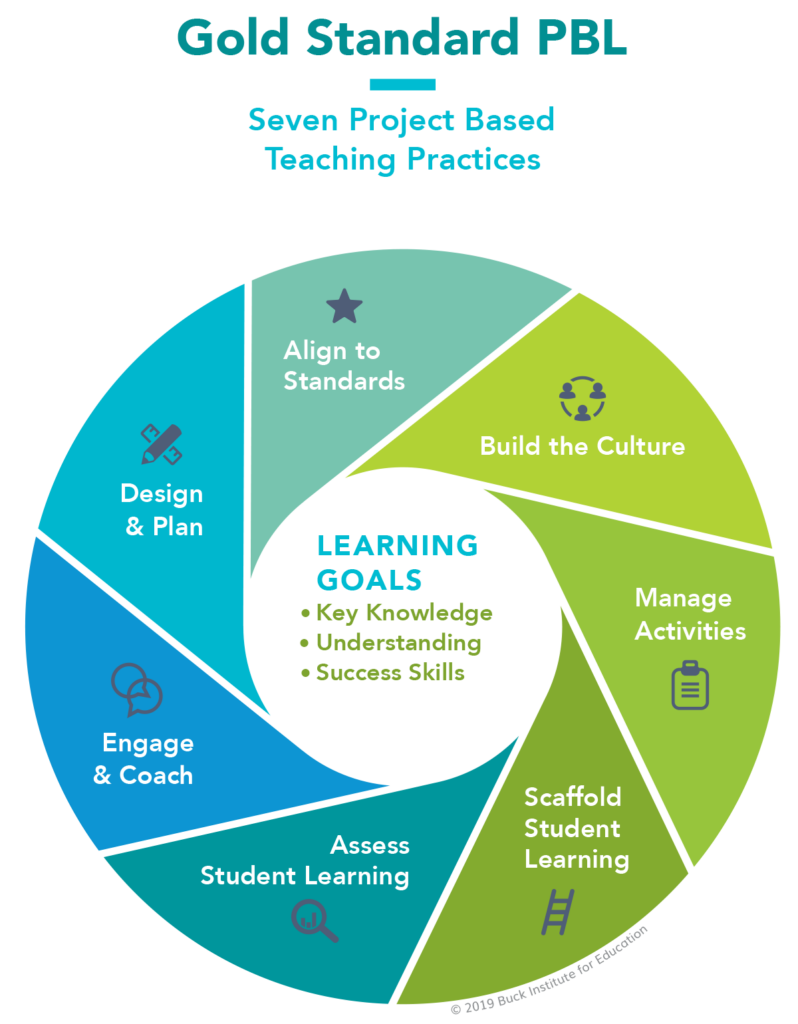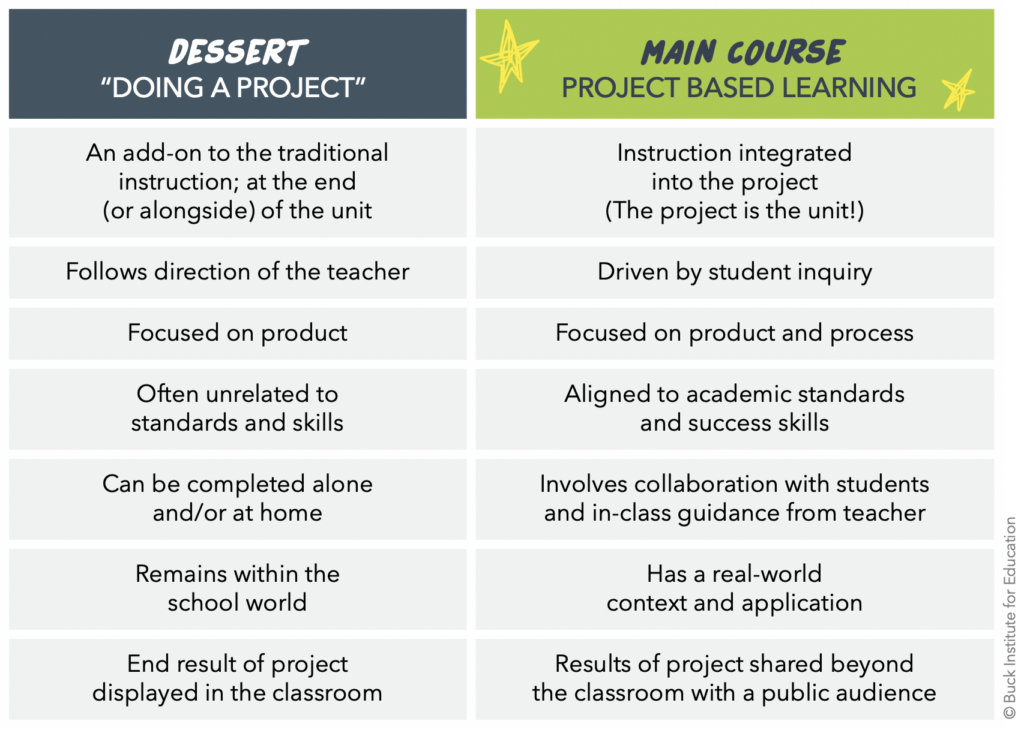Project-Based Learning
Project-based learning (PBL) is an instructional method which makes learning interactive and engaging. In a PBL environment, students actively explore and investigate complex questions, problems, or challenges over an extended period (What Is PBL? n.d.). The result of a PBL environment assists in developing essential skills such as critical thinking, communication, and collaboration. Most importantly, PBL allows for maximum creativity, which is vital in encouraging participation.

PBL compared with common Projects
Compared with other learning approaches in terms of projects, PBL has distinguishable characteristics that set it apart from project-based approaches. In typical project-based approaches, a project is fun and creative. However, some limitations disallow the student to achieve maximum participation fully. Regular projects allow for little collaboration and are essentially a recollection of ideas learned from a teacher. Compared with Project Based Learning, the unit that is taught is not delivered in a formal instructional method but instead has instruction integrated into the project. PBL focuses heavily on collaboration and allows students to visualize their impact on projects which results in an impactful experience and deeply engages students ((“Doing a Project” Vs. Project Based Learning, n.d.).

Project Based Learning and the Topic of Parkinson’s Disease
Since project-based learning is primarily project-oriented, it is challenging to implement a project-based learning approach with Parkinson’s Disease. Although PBL is not entirely compatible with concept-based teaching, the engaging nature of PBL can achieve the capability to demonstrate what is learned. However, without applying what is learned in PBL, the application of PBL is ineffective with Parkinson’s Disease. Topics highly compatible with PBL would be app development, blog posts sharing learning outcomes, and interactive infographics. PBL is essential in teaching effective communication, collaboration, and critical thinking, which are beneficial components in social learning and interaction. As for the concept of Parkinson’s disease, a direct instructional method would be highly effective for teaching it as a topic.
References
“Doing a Project” vs. Project Based Learning. (n.d.). PBLWorks. Retrieved October 9, 2022, from https://www.pblworks.org/doing-project-vs-project-based-learning
What is PBL? (n.d.). PBLWorks. Retrieved October 8, 2022, from https://www.pblworks.org/what-is-pbl
Hi Max,
Thank you for addressing the difference between common projects and project-based learning. I learned for the first time that PBL is about collaboration and getting students involved in a project in a fun way. I agree that PBL is not an ideal approach to learning design on the subject of Parkinson’s disease.
However, if the students are college-age or older, I think PBL is a practical approach. What are the learning activities of PBL in that case?